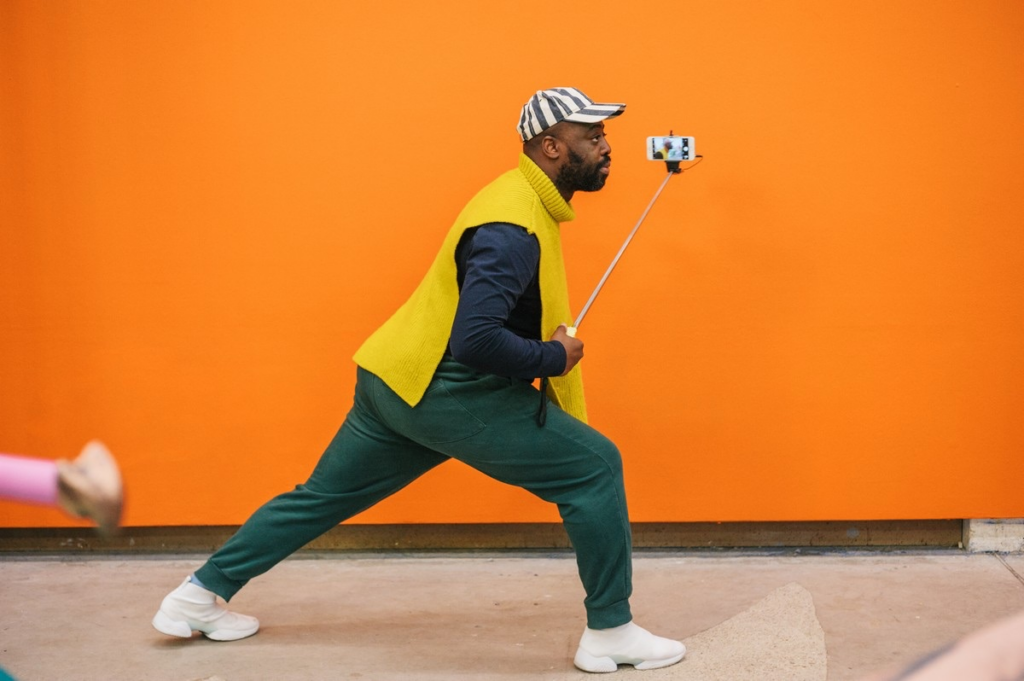Every artist has a first show. But ask around, and you’ll find that few began in gleaming white galleries with a sales list and press coverage. Instead, the first show is usually a mess of cables, late invites, badly hung work, warm wine, borrowed speakers, and a strange mix of friends, flatmates, mentors, and someone’s cousin who just happens to run a record label.
It’s rarely slick. But it’s always unforgettable and more importantly, it’s where things start to shift.
Your first show isn't about being discovered. It's about declaring: I'm here. So here’s how artists have done it and how you can, too.
Ready to stop waiting and start showing? Join LettsArt, a platform built for emerging artists to exhibit, promote, and sell their work on their own terms. Whether you’re launching from your bedroom or your local café, we’re here to help you make it real.
We’re conditioned to think of shows as things that happen to us, someone selects us, chooses us, anoints us. But most successful artists didn’t wait for a call. They made the call themselves.
Ebun Sodipo described her early shows as “almost house parties with art.” One took place in a converted garage with mirrors on the ceiling and a DJ under them. “People stayed for hours. Some didn’t even realise it was an art show until halfway through.”

In the early 2000s, Anthea Hamilton built her first exhibition out of necessity. Living in a small flat with an even smaller studio, she created a towering soft sculpture that could only be viewed by stepping over a mattress and into the hallway. “It wasn’t meant to be an exhibition,” she later recalled. “But people kept asking to see what I was working on, so I started inviting them in.”
She made a list of everyone she knew who might be interested in art — old tutors, friends of friends, a curator she once met at a party and sent a simple text: Come see the thing I made. That “thing” was later restaged in institutional contexts, but the spark was the living room version - lit badly, held together with pins, and impossible to forget.
The act of showing, even just to yourself, is often what reveals the work’s potential.
Take Harold Offeh, known now for socially charged performance and video pieces. As a student, he staged mock exhibitions in his bedroom, complete with printed wall labels and fake audio guides. No one else was invited. “It was absurd,” he admits. “But it taught me to take my ideas seriously, to treat them as real before anyone else did.”
Later, he projected one of his pieces onto the wall of his college’s library, guerrilla-style, unannounced. “It doesn’t need to be official to be powerful.”

The biggest myth? That a show needs a gallery.
In 2015, Eleanor Barrett transformed a derelict chip shop in Leeds into a temporary gallery. “It still smelled of oil,” she said, “but it had good bones.” She curated a group show with friends. One sound artist even composed a piece based on deep-fryer hiss. The opening night attracted over 80 people, including a local councillor and two curators who had “never seen art like that in that kind of space.”
More recently, Rafiah Rowe staged her debut solo show in her cousin’s Afro-Caribbean hair salon. She installed textile pieces between the dryers and turned the waiting area into a performance zone. “The gallery wasn’t going to invite me. So I brought the art to where I was already loved.”
Forget the press release. What matters is the personal invitation. Harun Morrison remembers hand-delivering flyers for his first show to strangers at Ridley Road Market. “I’d say, ‘Hey, this might be weird, but I’m showing something nearby, want to come?’” That show, in the back of a Nigerian restaurant, ended up packed.
Your friends aren’t just your audience - they’re your accomplices. Make the room buzz.

Your show isn’t just what’s on the wall. It’s what’s in the air.
Think: how do I want people to feel? Then build from there.
You don’t need a professional photographer. You just need proof. Nikita Gale recorded her first informal showing, a sound installation in a warehouse loft, on an iPhone 4. “It wasn’t high-res,” she says, “but it showed the work lived. It had an audience. And that helped me get the next thing.”
Make a simple A4 handout. Take a few shots. Capture the buzz.
There will be smudged walls. Weird silences. Warm beer. Late RSVPs. That’s how it should be.
The goal isn’t to impress. It’s to shift the energy. The late artist Rasheed Araeen, long before recognition, curated landmark exhibitions from his kitchen table. His motto: “Don’t ask to be included. Create your own structure. Invite people into that.”
Thinking about your first (or next) show? LettsArt gives you the tools to exhibit, promote, and sell your work without permission, pretense, or middlemen. Set up your exhibition, your way.
Final Checklist:
Do you have 3 finished works? → Good.
A space (any space)? → Great.
20 people to invite? → That’s a crowd.
A phone to document it? → You’re ready.
Snacks? Optional, but powerful.
Start with what you have. Make it unforgettable. Show like nobody’s watching and then make them watch.